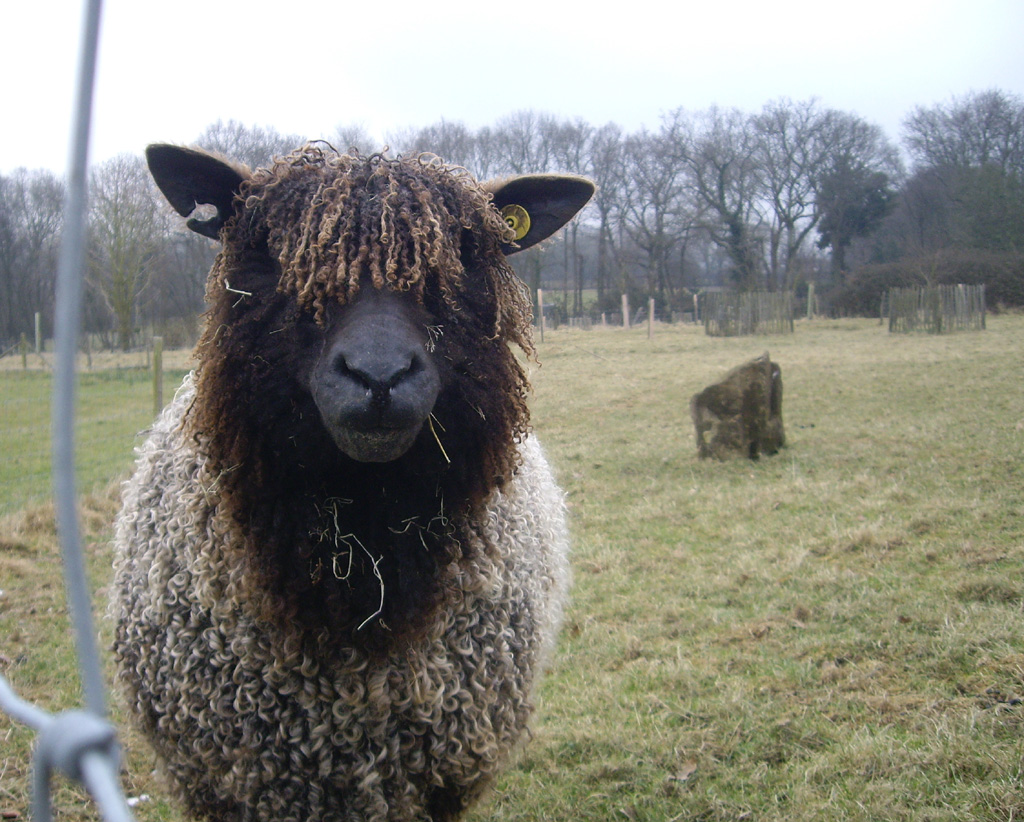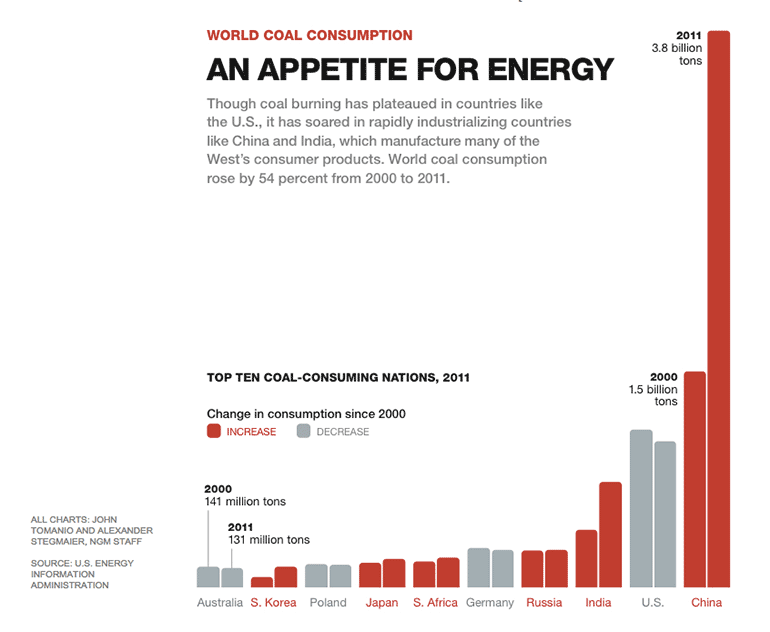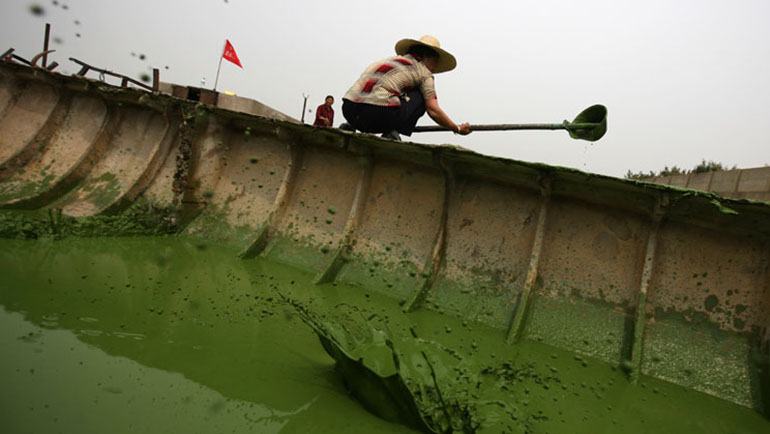Good afternoon, WOVEMBERISTS! Today we have an important BONUS POST from Kylie Gusset, creator of the awesome Ton of Wool project. This afternoon she speaks about sourcing ethical wool and several issues for us to better understand as consumers of WOOL.
How Climate Change Is More Painful Than Mulesing Ever Was.
When we talk about sourcing wool from credible, ethical sources one of the first words to enter the discussion is mulesing. However in terms of the health of animals, planet and people, there is a far more insidious and less well-known problem: Chinese processing. I really wanted to write about mulesing for Wovember because as consumers, we need to be able to make buying decisions with our eyes wide open.
Mulesing: “The process of removing folds of skin from the tail area of a sheep, intended to reduce fly strike.”
I don’t think I’ve seen another word as divisive, deceiving, and maligned in the farming world. When it comes to the truth about Australian wool there’s been an awful lot of pulling the wool over your eyes. In terms of animal welfare, mulesing isn’t the massive issue that it’s been made out to be; Chinese processing is a far larger and more insidious one in the Australian wool industry and it needs to be talked about, understood, and changed.

Sheep Welfare
One of the primary concerns for knitters is that our yarn comes from happy sheep. Here’s one way of looking at the concept of happy sheep through the key principles to sheep welfare *:
- Health – the best possible care
- Nutrition – permanent access to food in its most natural state, as much as the sheep needs
- Behaviour – sheep should be sheep
- Handling – the least amount possible in order to enable the other principles
(* When it comes to sheep welfare, the International Wool Textile Organisation (IWTO) [have the following guidelines to wool sheep]. (.pdf))
The key thing for all animals is good health. So when we want to have happy sheep, let’s start with live sheep. It’s estimated that around 3 million sheep in Australia die each year due to flystrike, which mulesing helps to prevent. Fly strike not only causes death but also hideous suffering to sheep. I’ll spare you the photos but as Deb Robson – Internationally renowned fibre expert and animal lover says “The difficulty is that the problem for which it is the cure (flystrike) is worse than the mulesing”.
Flies are attracted to dirty rear ends of sheep. Keep that rear end of the sheep clean through restricting their diet over their lifetime, and you have your “happy” unmulesed sheep. Diet restriction can occur through overstocking, or simply putting sheep onto poorer pasture where their nutritional needs may not be met.
Breeding to create sheep at less risk of flystrike, if done according to PETA’s estimate of 2 years, would require major human intervention such as through artificial insemination, which needs hormone therapy, a stomach puncture, and 2 insemination needles… that is quite a lot of Handling. This is an extremely brief introduction to these topics, but as you can see, animal welfare surrounding mulesing is complex and non-mulesed sheep doesn’t necessarily automatically equate with “happy” sheep.
PETA: People for the Ethical Treatment Of?
How did you find out about Mulesing? If it was via PETA, bear this in mind – their version of ethical is that “animals are not ours to eat, wear, experiment on, use for entertainment, or abuse in any other way.” Animal farming is absolutely verboten in the PETA paradigm. No matter it’s history, how thoughtfully, small scale, or carefully it’s done, PETA frames all animal farming as exploitation.
Here’s an exchange on twitter between myself & Metal Musician/PETA spokeperson Jona Weinhofen as an example:
.@jonaweinhofen open invitation; come see what really happens on a sheep farm: http://t.co/c3jHo358kN pic.twitter.com/L0PVtkJ5m9
— TONOFWOOL (@TONOFWOOL) April 5, 2015
@TONOFWOOL on one farm out of the how many? There are dairy farms who treat humanely too. And thousands which don’t. It’s still exploitation — Jona Weinhofen ? (@jonaweinhofen) April 5, 2015
.@jonaweinhofen appreciate you acknowledging humane treatment. If you’d like to see it in action, the farm gate is wide open.
— TONOFWOOL (@TONOFWOOL) April 5, 2015
@TONOFWOOL while I dont doubt your farm (probably) acts humanely, I still dont believe in exploitation of animals for any reason, esp profit — Jona Weinhofen ? (@jonaweinhofen) April 5, 2015
The slightly difficult thing about PETA’s aim is that they want to end a farming industry that currently has approximately 1 billion sheep around the world. PETA says that to end the “cruel” wool industry, consumers must stop buying wool. But by reducing the demand for wool, PETA force small-scale farmers to take options that damage the welfare of animals and planet alike.
The slightly difficult thing about PETA’s aim is that they want to end a farming industry that currently has approximately 1 billion sheep around the world. PETA says that to end the “cruel” wool industry, consumers must stop buying wool. But by reducing the demand for wool, PETA force small-scale farmers to take options that damage the welfare of animals and planet alike.
Here’s what I’m seeing in Australia: struggling farmers selling to larger industrialised farms such as the Macquarie Bank owned Paraway or swapping over to raising and selling fat lambs for which there is no end of demand thanks to diets such as Paleo which rely on grassfed meat. How can bigger agribusinesses and more meat lambs involve less cruelty than small scale wool production?
PETA’s Propaganda Tactics
If I modelled PETA’s use of language, I have been mutilated, bruised, disfigured, prodded, poked and hacked into. In other words, I’ve had laser eye surgery. In PETA’s terms “mulesing” – which is a surgical procedure – is called “a mutilation”. The word “mutilation” is emotive and paints the bleakest possible picture of mulesing. But is this picture the truth?
Then there’s the numbers – hundreds! “Every year, hundreds of lambs die before the age of 8 weeks from exposure or starvation, and mature sheep die every year from disease, lack of shelter, and neglect.” Given there’s around 69 million sheep in Australia, when you know PETA’s hundreds translates to roughly 0.0014%, you can see that those death rates aren’t dissimilar to that of human babies.
Fact-checking PETA’s statistics and emotive use of language is essential, for example claims that “A wool jumper is just as cruel as a mink coat” are simply untrue. The production of fur coats involves the death of animals. Shearing wool from sheep requires the equivalent of an annual haircut which enables sheep health, not their deaths.
Using emotive language and shock tactics, PETA spread information using a technique known as an information cascade:
“Information cascades occur when people rapidly repeat or share information from others without first verifying its validity. Once the cascade reaches a critical mass, it no longer matters what the facts are.” – Anita Sarkeesian**
(**Anita Sarkeesian is part of the online gaming community where she’s frequently harrassed, and details how an Information cascade happens in her presentation at the XOXO festival.)
There’s the press from 2014 of sheep being “Killed, Punched, Stomped on, and Cut for Wool”. A year after its release, nobody featured in the video of incredibly upsetting and disturbing footage mentioned in the articles has been named or prosecuted. Where was the video made? Who is pictured in it? How can they be brought to justice? How is this a more truthful or accurate representation of sheep shearing than the hundreds of videos of shearing held on YouTube in which animals are not treated cruelly?
The Real Problem
PETA’s emotive use of language, statistics and video footage have whipped up a frenzy of fear around wool consumption; we all want assurance that the wool with which we knit has not involved the suffering of sheep. The far larger issue that no one is talking about is Chinese processing, using Australian coal as the energy source. The double whammy of needlessly exporting wool and coal to another country so we can do there what we won’t do in our own backyard is a spineless, thoughtless, destructive move that the world is paying for.
Why Chinese Processing Sucks
One of Australia’s main exports to China is coal. Air pollution from coal mining in Australia is causing more deaths than car accidents. Coal consumption in China has increased from 1.5 to 3.8 billion tons:

China is the world leader in carbon emissions and these are having a direct impact on climate, with our hottest year ever:
2015 likely to be “planet’s warmest year in millennia—probably since the invention of agriculture >10,000 yrs ago.” https://t.co/7ID0RlsyXp
— AlexSteffen (@AlexSteffen) November 11, 2015
China has one of the highest pollution rates in the world now reaching record levels, and is the largest contributor to global warming. Textile processing is incredibly resource intensive which requires large amounts of energy (coal, to heat water, power machines, and light factories) and water (cleaning and dyeing). What has occurred is that water from textile processing in China has become so toxic that “you’d shed a layer of skin if you jumped into this water”

Unrestrictive chemical laws in China enable toxic textile processes such as the superwash treatment where wool is bleached and then coated with a polymer (plastic) coating, with untreated effluent going into local water supply. Worryingly, the protective plastic coating applied to wool during the superwash process is removed a little with each wash, sending it back into waterways, for animals to ingest to their detriment.
The amount of deaths to humans and animals caused by carbon and waste emissions is difficult to quantify, because the damage being done is incremental and compounding. What we know for certain is that any claims that Australian wool is sustainable if Chinese processing is involved, are bogus. We desperately need a divorce from the coal/wool marriage.
There’s also the issue of human rights where workers in China can be poorly paid, and work under extreme conditions as shown in these photos.
Minimum wages can be as low as $1 an hour, compared to the $15 an hour in Australia. These reasons are why Chinese processing of wool is very much kept off the radar for consumers as much as possible.
Examples of concealed Chinese Processing and unclear supply chains
Unfortunately, the involvement of Chinese processing – mainly the scouring (washing) of wool and top processing (aligning fibres and removing vegetable matter) – is very easy to mask through labelling and PR. This makes it difficult for consumers to make informed buying decisions.
1) Rahul Mishra – as featured on ecoterre:
“His mission is to encourage slow ethical fashion that celebrates imperfection, and to achieve a form of fashion democracy. The Mumbai-based designer is a stickler for hand-made fashion, and currently works with over 500 families who have participated in the creation of his award-winning sustainable collection.”
I checked with a Rahul Mishra stockist, and they finally conceded, that yes, yarn was sourced and processed in China. Even if Rahul used the Global Organic Textile Standard (GOTS), the standard contains no energy standard for use of renewable energy sources.
2) Honest By. “Honest By is the world’s first 100% transparent company”
“The line is unique in being entirely open about its supply chain and pricing.”
If that’s the case, then how come the wool for their mini skirt goes straight off the sheep’s back in Australia, then into a spinning mill in Italy? Could it be because there’s Chinese processing in between? I emailed, tweeted and tried to call Honest By in 2012, with no response.
Checking with New Merino in Australia who supplied Honest By, their response was that a fashion designer simply wouldn’t know where the wool for their collection was processed. Wovember have also recently emailed Honest By, and received the reply that “not all companies we work with agree to be transparent, and even though they give us information, they don’t always agree that we publish it on our website”. Honest By also told Wovember that “the raw wool is scoured and processed in a wool refining facility in Australia, then transported to the spinner in Italy. The wool refinery company doesn’t wish to have their name and contact details made public on our website”. Honest By are trying to show transparency in their supply chain. However company wishes for privacy mean they have had to leave out a chunk when explaining the production of the wool mini skirt. This missing chunk makes it difficult to understand what is going on from a consumer’s point of view, and shows how hard it is for a fashion company to be transparent if everyone isn’t on board.
3) Australian Country Spinners.
“Founded in 1923, the Wangaratta Woollen Mills was created to provide a sustainable industry for the town, situated in regional Victoria. Enduring through many changes, the mill remains an icon of the Australian textile manufacturing industry. They are the proud makers of Australian Superfine Merino for Cleckheaton.” If, by making, they mean scouring, top processing, and spinning into yarn which you’d assume that a company called Australian Country Spinners would do…spin, in the country…it’s incredibly deceiving copy. Australian Country Spinners has been spinning in China for years since laying off their workers.
What can we do?
One way that we can think of wool is along the same lines as food. Back in 2008, the 100 mile group on Ravelry came up with the fibre version of Michael Pollan’s food rules, and it’s a good one for knitters to live by:
- Don’t craft with anything your great-grandmother wouldn’t recognize.
- Don’t knit/craft anything that won’t eventually rot.
- Shop at small local community based guilds, festivals and farms, or wherever craft materials are the least processed.
- Craft everywhere, that way you spread the word and act as a good will ambassador for crafting with local materials.
- Stash less (the craft equivalent of “stop eating before you’re full”)
- “Pay less, Craft more” – meaning buy the material at a less processed stage (cheaper) like fleece, then you have more work to do before you can knit it.
- Craft with other people whenever possible, and always with pleasure.
Following simple rules with the consumption of food has seen the rise of the farmer’s market and championing great suppliers. As wool consumers, we have the same choices with wool that we have with food, and those choices shape what is available to us. When you see Australian Superwash Merino you are looking at the woolly trifecta that’s like white sugar: highly processed and to be used in moderation if at all.
If you are looking for readily available Australian wool that your great-grandmother would recognise, here are my recommendations:
- Tarndie – Polwarth from the founding family of the breed
- Bennet & Gregor – Corriedales (stunning coloured fleeces!)
- Woolganics Organic Merino
- Whitegum Wool – ethical merino
Something to note with all these yarns, and a good rule of thumb, is that like most farmers market food, they don’t have a barcode.
How do you ensure that the yarn you’re buying is ethical? How do you know that it has been produced in a way that is kind to the planet, to our non-renewable resources, to human beings and to sheep? The thing is not to jump on the emotive bandwagon of PETA’s anti-wool campaign, but to thoughtfully base the bulk of your purchases on close to farmer fibres.
Many thanks to Kylie for putting together this piece on sourcing wool ethically. All words © Kylie Gusset and used with kind permission.